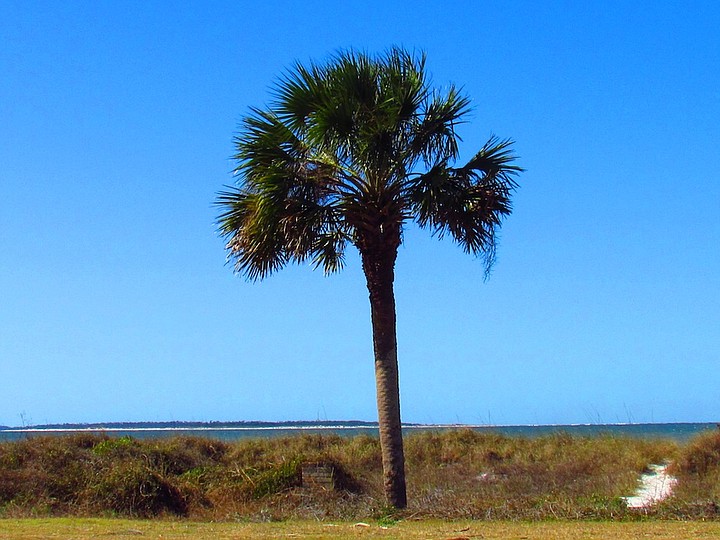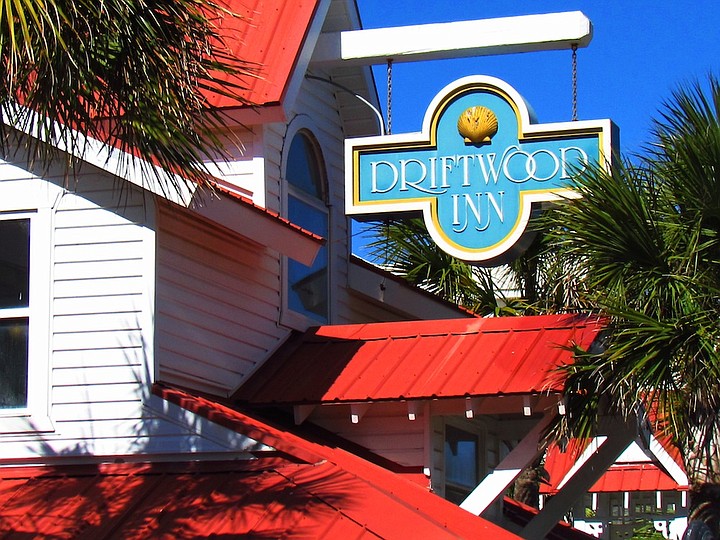 Facebook
Facebook
 X
X
 Instagram
Instagram
 TikTok
TikTok
 Youtube
Youtube

Here’s the thing about Mexico Beach: It’s not in Mexico. It’s on the panhandle 20 minutes south of Panama City and just off the tip of Port St. Joe – a little bit of yesterday lingering on the edge of the Gulf of Mexico.
Marketed as Florida's "undiscovered" coast, the towns along the Gulf Coastal Highway (Route 98) remind me of what beach holidays once were:

Sleepy vacation destinations devoid of view-busting high rises, mad miniature golf arcades, avenues littered with strip malls and street lights, and crowd-packed, gummed-up sidewalks. Small, old-fashioned beach towns with calm waves lapping clean shorelines. No whistle-blowing lifeguards or boombox-blaring spring break co-eds; just cheerful children and unstressed parents dragging wicker picnic hampers and oversized canvas totes stuffed with beach toys and terry towels. The town’s Fourth of July event, Blast on the Beach, is still good clean family fun.
Unlike many coastal resort towns, Mexico Beach remains virtually undeveloped. Palm-lined dunes are the only thing separating the two-lane highway from the bright white beaches and serene jade Gulf waters. No guard rails, no fences, no barriers between you and heaven. Welcome to the Floribbean, where unlaced flip-flopped visitors peruse the pastel storefronts and cafes that line the road with ease and birds chirp from blossoming bushes.
The ever-cool, ultra-rare quartz crystal sand (originating in the Appalachian Mountains far to the northeast) is also home to five species of sea turtles that breed from May through October. The offshore State Underwater Archaeological Preserve includes natural and artificial reefs drawing both skin and scuba divers, as does the historic shipwrecked Vamar and Nazi-blasted steam tanker, the Empire Mica. Preserve sites range from 2–30 miles offshore at depths of up to 120 feet.

Although there are ample vacation house rentals and a few motels, the Victorian Driftwood Inn (left) with its new beachfront shabby-chic chapel, gingerbread cottages and antiqued tea room provides the centerpiece for the five-mile long stretch of beachfront.
Leave the cell; grab the three-inch novel. Prickly Pears Gourmet Gallery has all the specialties – microbrew, espresso, cigars and fine wine – and a visit to Toucan’s tiki bar at sunset for a watermelon margarita, fried pickles and platter of Apalachicola Bay oysters is the perfect end to a peaceful sun-drenched beach day.
East of Mexico City lays Apalachicola, a picturesque seaside village with over 900 historic buildings listed in the National Register of Historic Places, many of which are now eclectic and trendy shops, cafes and inns. Once the third-largest Gulf port famous for its chandleries, sponge warehouse and net factory, it’s now home to the 246,000-acre pristine Apalachicola Estuarine Research Reserve.


Here’s the thing about Mexico Beach: It’s not in Mexico. It’s on the panhandle 20 minutes south of Panama City and just off the tip of Port St. Joe – a little bit of yesterday lingering on the edge of the Gulf of Mexico.
Marketed as Florida's "undiscovered" coast, the towns along the Gulf Coastal Highway (Route 98) remind me of what beach holidays once were:

Sleepy vacation destinations devoid of view-busting high rises, mad miniature golf arcades, avenues littered with strip malls and street lights, and crowd-packed, gummed-up sidewalks. Small, old-fashioned beach towns with calm waves lapping clean shorelines. No whistle-blowing lifeguards or boombox-blaring spring break co-eds; just cheerful children and unstressed parents dragging wicker picnic hampers and oversized canvas totes stuffed with beach toys and terry towels. The town’s Fourth of July event, Blast on the Beach, is still good clean family fun.
Unlike many coastal resort towns, Mexico Beach remains virtually undeveloped. Palm-lined dunes are the only thing separating the two-lane highway from the bright white beaches and serene jade Gulf waters. No guard rails, no fences, no barriers between you and heaven. Welcome to the Floribbean, where unlaced flip-flopped visitors peruse the pastel storefronts and cafes that line the road with ease and birds chirp from blossoming bushes.
The ever-cool, ultra-rare quartz crystal sand (originating in the Appalachian Mountains far to the northeast) is also home to five species of sea turtles that breed from May through October. The offshore State Underwater Archaeological Preserve includes natural and artificial reefs drawing both skin and scuba divers, as does the historic shipwrecked Vamar and Nazi-blasted steam tanker, the Empire Mica. Preserve sites range from 2–30 miles offshore at depths of up to 120 feet.

Although there are ample vacation house rentals and a few motels, the Victorian Driftwood Inn (left) with its new beachfront shabby-chic chapel, gingerbread cottages and antiqued tea room provides the centerpiece for the five-mile long stretch of beachfront.
Leave the cell; grab the three-inch novel. Prickly Pears Gourmet Gallery has all the specialties – microbrew, espresso, cigars and fine wine – and a visit to Toucan’s tiki bar at sunset for a watermelon margarita, fried pickles and platter of Apalachicola Bay oysters is the perfect end to a peaceful sun-drenched beach day.
East of Mexico City lays Apalachicola, a picturesque seaside village with over 900 historic buildings listed in the National Register of Historic Places, many of which are now eclectic and trendy shops, cafes and inns. Once the third-largest Gulf port famous for its chandleries, sponge warehouse and net factory, it’s now home to the 246,000-acre pristine Apalachicola Estuarine Research Reserve.
Comments